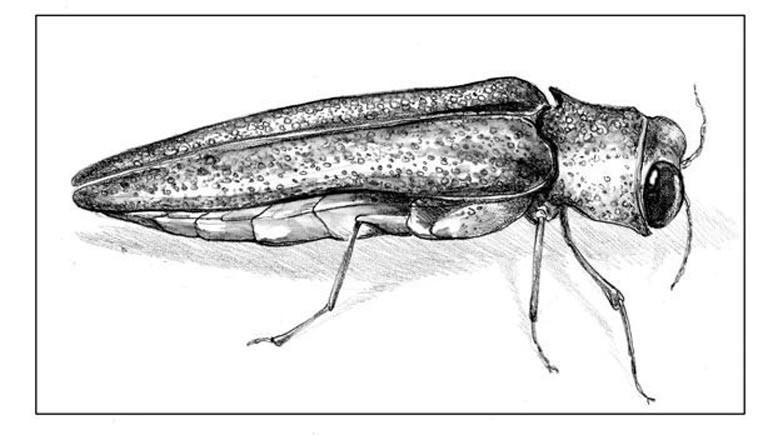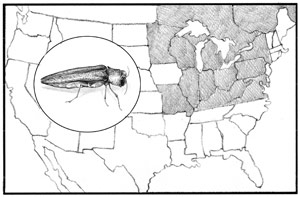
Early May is a gut-wrenching time for those of us who love ash. The trees take their time leafing out, appearing stone-cold dead for weeks after the maples have flowered and put on their fine show. Even the recalcitrant oak comes to life before the white ash stirs.
Thinking an ash tree is dead is not entirely unjustified: ash trees can suffer from ‘ash yellows,’ a disease in which microbes invade the circulatory system of the tree, causing it to lose color and vigor and die over the course of a few years. This happened on our farm three years ago: two vigorous youngsters above the pasture, each about 14 inches in diameter and straight-trunked for 30 feet, kicked the bucket seemingly overnight. At a summer’s end, they were a little pale and patchy in the crown, but the following spring I still thought they were just late to leaf out. Then by the Fourth of July I realized they were goners.
Of course, ash trees are now in far bigger trouble. The emerald ash borer, an Asian insect that turned up in Detroit (probably stowed away on a shipping pallet) a mere eight years ago, seems intent on devouring every last ash in North America. The borers already have raced into western New York and southern Quebec, just 30 miles from the Vermont border and are poised to invade both Vermont and New Hampshire possibly within the next two years. (The Vermont Department of Forests, Parks and Recreation recently issued a one-page bulletin titled, “Preparing for Emerald Ash Borer,” to alert people to the issue; and it has made the full text of its report available at www.vtfpr.org/protection/idfrontpage.cfm.)
The folks at the forestry department put a good face on the problem, but when the ship’s captain declares over the loudspeaker that “there’s no need to panic, folks, but we’re going to lower the lifeboats just the same,” it’s best to pay heed.
The borer is a lovely-looking, metallic green insect about a half-inch long that looks vaguely like a grasshopper. Infested ash trees die within three years, usually from the top down. Removing dying bark of an infected tree will reveal serpentine galleries bored into the wood by the borers’ larvae. These galleries sever the flow of nutrients between roots and crown, starving the tree.
The Forest, Parks and Recreation Department bulletin advises landowners against going out with chainsaws to cut every ash tree in the woods. The borer is not here yet; and if and when it does arrive, some trees may be overlooked or have a natural resistance. Nevertheless, the bulletin does recommend taking steps to “regenerate or enhance the growth of other species.” In other words, prepare for life without ash.
This would mean life without baseball bats, snowshoes and beautiful cabinetry—at least made from ash. More than 100 million ash trees now are growing in Vermont, roughly one out of every 16 hardwoods. New Hampshire has fewer due to its generally lower soil pH.

Illustration by Adelaide Tyrol
The bulletin from the state also mentions the ban on moving firewood more than 50 miles that was ordered because of the borer’s ability to hitchhike in dead wood.
I had all this in mind earlier this month when selecting trees to cut for next year’s firewood. My usual approach when choosing between two trees, one to cut and one to keep, is to keep the more vigorous tree. That’s easy when both are of the same species. But if two species are in play, one ash and one something else, it’s suddenly more complicated.
When I came to a mature, beautiful ash tree a few days ago, I decided to spare it. The tree already had won the race, so to speak, and it seemed only fair to give it a chance to fully flourish this summer and possibly spread new seeds that could repopulate the species in the event the ash-borer problem is somehow resolved. But what to do with two vigorous 10-inch diameter trees, growing side by side, one a sugar maple and one a white ash?
Actually this is a poor example, because sugar maple is Vermont’s state tree, and since we don’t have many of them on the farm, the tie, for me, goes to the sugar maple. But how about a perfectly straight ash versus a promising red oak? Or even an ash versus a lowly hophornbeam, a shrub that will likely never exceed 10 inches in diameter but will produce lots of seed for wildlife and the densest firewood we have?
This spring, for the first time, I almost always kept the other tree. It helped that the ashes looked dead at this time of year anyway.


Discussion *